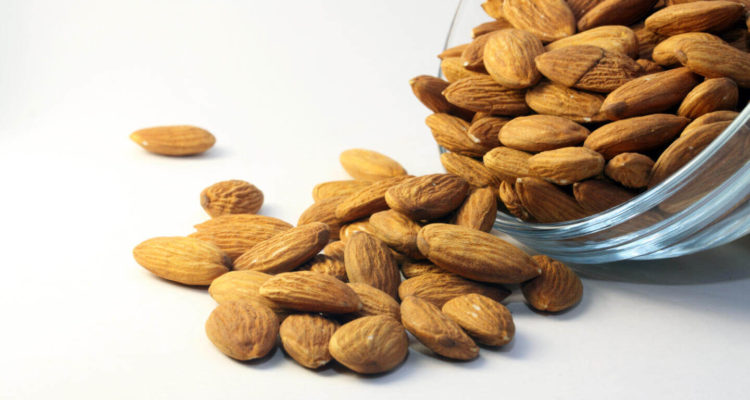
10 foods with the most magnesium
0
You often feel stressed, cry for no reason and are on the verge of a nervous breakdown breakdown? You may have a magnesium deficiency. We tell you which products contain the magnesium you need.
Some underestimate the importance of magnesium: it supports immunity, reduces the risk of cancer, improves heart health and prevents heart attacks. Many studies confirm the benefits of this trace element. One of them, which was conducted at Harvard University, helped to find out: daily consumption of the daily norm of magnesium reduces the risk of diabetes by 33%. Probably, you have often seen magnesium preparations in pharmacies – they can also be taken, but it is best to get a daily dose of magnesium from food. We will tell you about them today.
— Magnesium is a unique trace element that performs important functions in the human body: it affects muscle work, lowers blood pressure, and relieves constipation. Magnesium plays a major role in energy production, protein building, glucose metabolism, and the transmission of genetic information. This trace element has a sedative effect, so it can be used to relieve nervous tension.
If a person is balanced, does not suffer from mood swings, does not have an increase in blood pressure, everything is fine with the stool – most likely, such a person does not have magnesium deficiency in the body. Nervousness, tearfulness, constipation, increased blood pressure are indirect signs of a lack of this trace element. And here it is necessary to take drugs containing magnesium.
– It is easy to get a daily dose of magnesium: it is found in cereals, and together with vitamin B6, with which it is better absorbed. But cereals are a high-calorie product. American nutritionists allocate only 5% of the diet to cereals. And when losing weight, I recommend my patients to consume about 100-150 g of porridge per day. Of course, you cannot get a daily dose of magnesium with such a portion. But if a person eats a sufficient amount of vegetables and greens – 7-10 servings per day (except porridge), – he does not have problems with the cardiovascular system, he is not in a state of stress, he does not need additional intake of magnesium.
The Recommended Daily Allowance (RDA) for magnesium is 310 mg for women and 400 mg for men.
1. Almond
One cup of almonds contains 80 mg of magnesium, as well as vitamin E, which increases the body's protective response to diseases and slows down the aging process. Almonds, like all nuts, are rich in protein, but at the same time have a high calorie content – 576 calories in 100 grams. Therefore, in order not to harm the figure, you need to eat nuts very carefully. Almonds are also good for the heart because they contain omega-3 fatty acids.
2. Seeds
All kinds of seeds can be included here: sunflower, pumpkin, sesame, flax. 30 grams of sesame seeds contain about 105 mg of magnesium, 30 grams of pumpkin seeds – about 80 mg, 40 mg in a teaspoon of flax seeds, and 1/4 cup of sunflower seeds – 128 mg. Another reason to prepare granola according to our recipes: add all the listed seeds, almonds and other nuts – the body will immediately receive a considerable dose of magnesium.
3. Bananas
Bananas are known for their high potassium content, but besides it, they store many other trace elements. Among them is magnesium: one medium banana contains about 32 mg of this element. It is known that unripe green bananas contain resistant starch – a useful carbohydrate that gives a feeling of satiety and starts the metabolism.
4. Broccoli
According to some studies, people who eat a lot of broccoli are less likely to get colon and bladder cancer. These green florets are high in magnesium (51 mg in 1/2 cup of cooked broccoli), vitamin C, phosphorus, calcium and fiber. Broccoli is not only healthy, but also tasty. Prepare soups according to our recipes and see for yourself.
5. Corn
6. Peas
Everyone loves peas for their high protein content, nutrition, affordability, and the huge number of simple dishes they can be used in. In addition, it is rich in magnesium (48 mg in one cup), potassium, vitamin A and C. Peas improve liver and kidney function, regulate digestion and maintain normal cholesterol levels.
7. Spinach
Spinach is the best friend of people who want to lose weight and lead a healthy lifestyle: it has few calories, but a lot of vitamins and trace elements. Spinach is one of the main suppliers of not only iron, but also magnesium: 157 mg in one cup, which is 40% of the daily value for women. Make a salad of vegetables or fruits and spinach, sprinkle with seeds – that's all 100%.
8. Avocado
We're not at all surprised that avocados are back on the list of “foods with the most…”. Magnesium content in one medium-sized avocado is 58 mg. Add 1/2 to that salad from the previous point for a great magnesium-rich lunchtime meal. Just restore the nervous system before the second half of the working day.
9. Figs
Wait for fig season and replenish your magnesium reserves – 100 grams contain 59 mg of this trace element. Figs also contain vitamin A, B vitamins, iron, phosphorus, potassium and fiber. Such a powerful composition lowers cholesterol levels, the risk of heart disease and colon cancer, strengthens bones, and also significantly reduces sore throat pain.
10. Dark chocolate
Can't you live without chocolate? There is no need to give it up – eat one square for breakfast, and your body will receive 95 mg of magnesium. This means that a good mood is guaranteed and there will definitely be no stress. In addition, dark chocolate improves blood circulation, lowers blood pressure and improves heart function.









Leave a Reply